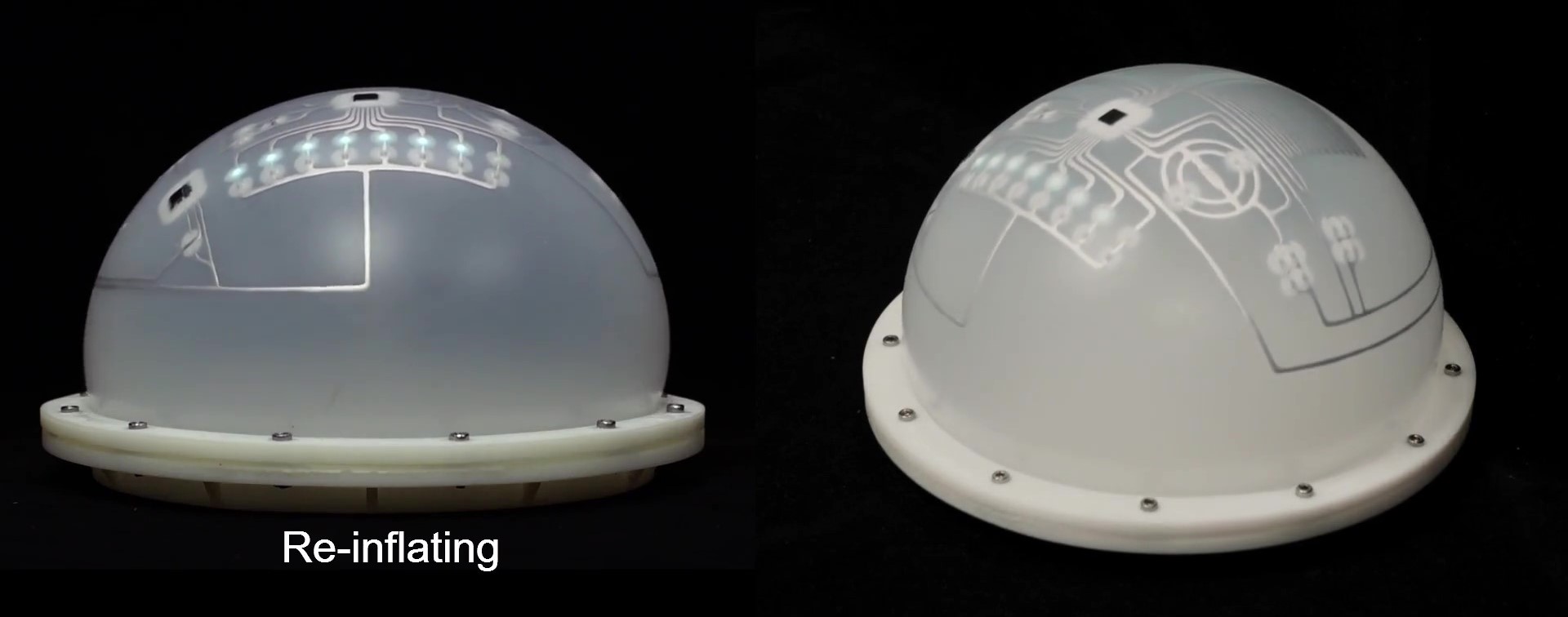
Source: Wikimedia Commons
Engineers and evil geniuses alike often seek inspiration from animals when designing new robots and robotic features – think Dr. Octopus from Marvel Studios. This month, a team of robotics engineers has captured some of the more life-like qualities of the very same 8-limbed mollusk in a new octopus-inspired soft tentacle robot.
What they did:
As a new development in soft robotics, engineers at Beihang University, Beijing, and the National University of Singapore found a way to make a stretchy robotic tentacle that can move and curl like a real octopus limb, all while completely submerged in water.
For this design to work, they had to employ liquid metal circuits, which is an emerging technology that will likely advance flexible electronics in the decades to come. Liquid metal circuits, unlike regular circuits, can be stretched and flexed repeatedly without breaking because, well, they’re a fluid encased in rubbery silicon. This is what enables the robotic tentacle tip to extend to 1.5x the length of its length to coil around an object.

Liquid metal circuit withstanding a high degree of expansion. Source: https://doi.org/10.1126/scirobotics.adh7852
Meanwhile, the tentacle tip is equipped with suction cups and sensors for expansion, elongation, suction, and temperature. An on-board microprocessor allows it to perform some complex tasks autonomously, like navigating to and unscrewing a lightbulb through a hole in a wall, and sensing and grasping an object in its path.
Onboard Bluetooth also allows it to be operated manually. Humans can command the tentacle using a controller that slips over a single finger, like the finger of a glove. By curling their finger and moving their arm around a bit, the human operator can tell the tentacle to aim at a target (like a toy shark floating above the water), reach out, grasp it, and then drag it back down under the water. Haptic sensors in the finger remote can even tell the operator when the suction cups on the tentacle are successfully attached to an object.
What this means for science:
The engineers did not allude to any of the diabolicalness of Dr. Octopus when sharing their work in Science this past month, but they did mention their desire to advance soft robotics that incorporate stretchable electronics in autonomous systems. Their work was also some of the first to demonstrate liquid metal circuitry in action, but be on the lookout for more advances in this revolutionary technology.
If you enjoyed reading our articles, please support us by buying our geeky merchandise on Instagram. Alternatively, you could buy us a coffee or follow us on Facebook, Twitter, Pinterest, or Medium.



1 comment
[…] or historical puzzles. The program features exclusive reporting and opinions of experts on the latest developments in science and technology. It helps the audience understand challenging scientific tasks and praises the curiosity that lies […]